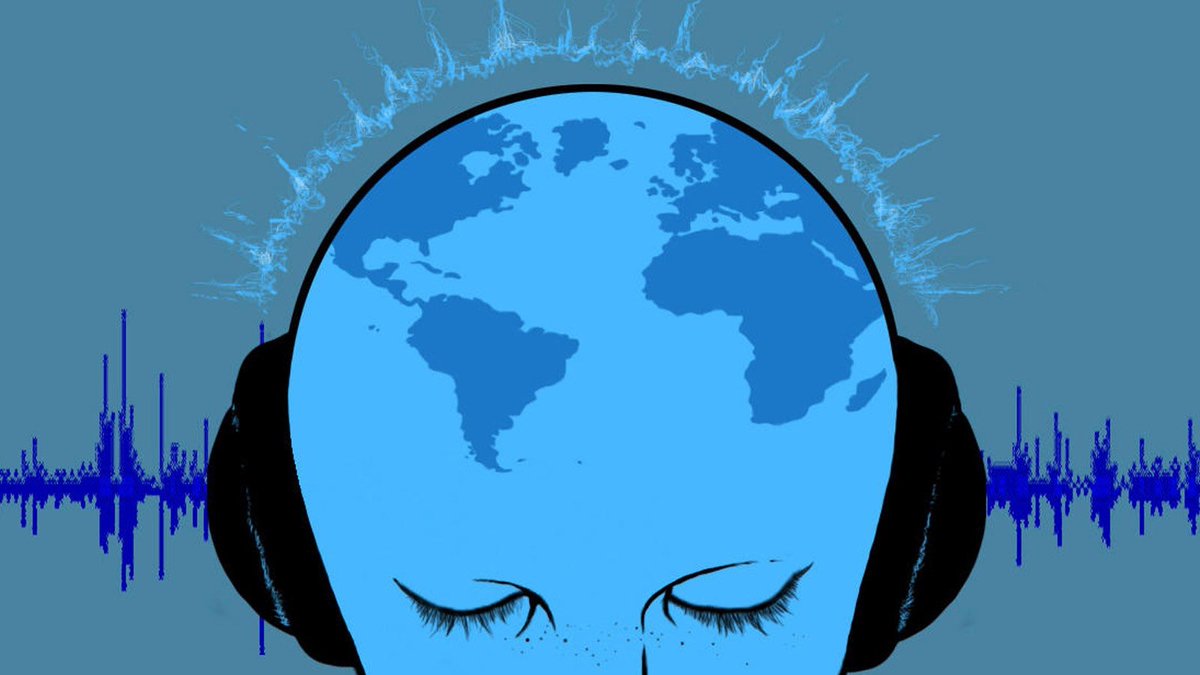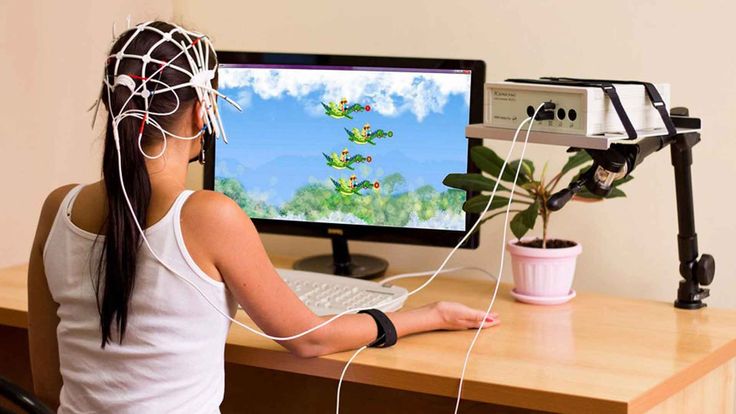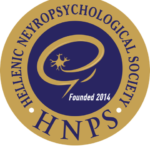Abstract
ASMR is a complex positive emotion experienced by some people in response to triggers including auditory, visual, interpersonal and tactile stimuli. We propose that the ability to experience ASMR and its resulting intensity might be underlined by individual differences in sensory sensitivity to exteroceptive and interoceptive cues. In a pre-registered study (N = 557), we examined whether sensory sensitivity measures (1) differentiated ASMR from non-ASMR responders and (2) predicted ASMR intensity. Results showed that people with (stronger) ASMR had greater interoceptive sensitivity (MAIA2) and bodily awareness (BPQ-BA) and were more likely to be classified as highly sensitive (HSPS). Results are discussed in relation to individual differences in environmental sensitivity, interoception, and emotional appraisal processes.
Introduction
Everyday sensory stimuli such as the sound of someone eating, the feel of washing your hair or the smell of someone’s perfume can produce different emotional responses between people. At the extreme end of the spectrum, hyper-sensitivity to sensory stimuli has been implicated in a range of clinical conditions (Ben-Sasson et al., 2019, Bijlenga et al., 2017, Liss et al., 2008, Rieke and Anderson, 2009). But might there also be beneficial emotional outcomes for those with heightened sensory sensitivity? Here we explore the possibility that Autonomous Sensory Meridian Response (ASMR) may be a positive emotional consequence of enhanced sensory sensitivity.
ASMR is a complex positive emotional state experienced by some people in response to triggers including auditory stimuli (e.g., whispering, soft-speaking, and tapping), visual stimuli (e.g., delicate hand movements, repetitive actions), interpersonal stimuli (e.g., close personal attention, caring) and touch (e.g., tracing fingers on the back) (Barratt & Davis, 2015). The feeling is a tingling sensation that begins at the crown of the head spreading down the body; it is an immersive ‘trance-like’ state that has been likened to flow and is accompanied by feelings of both euphoria and relaxation (Roberts et al., 2019).
Since the term ‘ASMR’ was coined in 2010, there has been an explosion of interest in ASMR and the emergence of an online ASMR community. “ASMR” is currently the 3rd most searched term on YouTube worldwide (Hardwick, 2020) with hundreds of thousands of YouTube videos created to induce the ASMR state in viewers. Although ASMR can be experienced in daily life situations, ASMR videos allow people to experience ASMR ‘on-demand’. As a result, ASMR videos are being self-prescribed by many experiencers as a method of regulating emotion, promoting sleep, and improving well-being (Barratt & Davis, 2015).
Anecdotal reports of the benefits of ASMR for well-being are now supported by empirical evidence (Poerio et al., 2018). ASMR is associated with reliable increases in self-reported positive affect and significant reductions in heart rate (average 3.41 bpm), physiological effects comparable to recognised interventions of mindfulness and music-based stress reduction (Campbell-Sills et al., 2006). Although there is evidence that ASMR is a genuine and reliable emotional experience with the potential to enhance well-being, we lack an understanding of the determinants of ASMR. Why are only a proportion of the population able to experience and derive emotional benefit from ASMR? And why, even amongst ASMR-sensitive individuals, do some experience a more intense response? Generating greater insight into the determinants of ASMR is important for this emerging field and has the potential to reveal insights into individual differences in both (1) the integration between sensory input and emotional responding, and (2) emotional complexity and its potential to improve well-being.
Individual differences in sensory sensitivity may explain why only some people experience the complex emotion of ASMR. We define sensory sensitivity as self-reported perceptions of how an individual processes and responds to internal and external sensory cues. This definition refers to subjective sensory sensitivity (i.e., first-person reports) rather than behavioural (i.e., individual differences in the ability to detect and discriminate sensory stimuli) or neural (i.e., the extent of neural activation induced by sensory stimuli) sensory sensitivity (Ward, 2019). Our definition encompasses sensory processing of exteroceptive cues originating externally (e.g., sights and sounds) and interoceptive cues coming from within the body (Craig, 2002).
We propose that the ability to experience ASMR and its resulting intensity may be underlined by heightened sensory sensitivity to exteroceptive and interoceptive cues. We speculate that (stronger) ASMR is underlined by at least two component processes involved in the translation of external input to subjective feelings:
- (1) heightened sensory sensitivity to external cues involving greater salience to ASMR triggers (which may therefore be difficult to disengage from) and
- (2) enhanced interoceptive awareness involving the translation of sensory stimuli to stronger internal emotional responses (enhancing the intensity of emotional responses to ASMR triggers).
The proposal that these component processes underline the presence and intensity of ASMR is based on research (reviewed below) on the related phenomena of aesthetic emotions and misophonia, which are likely to have similar underlying mechanisms to ASMR.
Like ASMR, the experience of complex emotional states known as aesthetic emotions (e.g., awe, elevation, frisson) are not universal and vary in intensity between people. For example, not everyone experiences frisson (a tingling sensation on the back of the head resulting in goosebumps) (Grewe et al., 2011) or the tingling sensations associated with elevation (Haidt, 2003) or feeling moved (Menninghaus et al., 2015). Although ASMR is qualitatively different to other aesthetic emotions, they are related and may have similar underlying determinants. Frisson and ASMR are significantly positively correlated, (Kovacevich and Huron, 2019, Roberts et al., 2019), they show similar neural activation patterns (Lochte et al., 2018), and 87% of ASMR respondents reported experiencing frisson (Fredborg et al., 2017).
Individual differences in complex emotional states may reflect neurodevelopmental differences in how sensory input is translated into subjective emotional responses. For instance, those who experience more intense emotional responses to music have stronger white matter connectivity between neural regions involved in sensory and emotional processing (Sachs et al., 2016), suggesting that individual differences in the way that people experience emotion as a result of external sensory stimuli (e.g., music) may reflect differences in the structural organisation of the brain. ASMR may also be associated with comparable neural differences in how sensory input and emotional experience are integrated. People with ASMR show reduced functional connectivity within the Default Mode Network (a constellation of brain regions involved in self-referential processing; Poerio et al., 2018), but increased functional connectivity between the DMN and clusters in executive-control and visual resting state networks (Smith et al., 2017). This has led to the suggestion that ASMR is driven by an inability to inhibit sensory-emotional responses.
Individual differences in interoception (internal sensory sensitivity) are also important for aesthetic emotions. Tingling (e.g., chills, goose-tingles) is a prototypical feature of aesthetic emotions (Menninghaus et al., 2019) and is the canonical feature of ASMR (where tingling is located primarily on the head). Tingling can be conceptualised as spontaneous and sub-conscious afferent signals from neurons at the skin being brought to conscious awareness via interoceptive attention (see Tihanyi et al., 2018). Individuals who are more sensitive to interoceptive cues experience more frequent ‘spontaneous’ tingling sensations with greater intensity (Michael et al., 2015, Tihanyi and Köteles, 2017). Individual differences in interoception also explain variation in subjective emotional experience. People who are more sensitive to interoceptive cues experience emotions more intensely (Wiens et al., 2000) and place greater emphasis on information from the arousal component of core affect (Feldman-Barrett et al., 2004).
Misophonia is a condition describing aversive and angry feelings in response to certain sounds (e.g., tapping, chewing, lip smacking, and pen clicking) (Wu et al., 2014). Although one might expect ASMR and misophonia to be negatively associated because similar triggers produce opposite emotional reactions, research shows that they commonly co-occur. ASMR-sensitive individuals have elevated levels of misophonia (McErlean & Banissy, 2018), just under half of ASMR participants (43%) experience misophonia (Barratt et al., 2017), and 49% of misophonics experience ASMR (Rouw & Erfanian, 2018). One explanation for the unlikely co-occurrence of ASMR and misophonia is that they share a common mechanism, both being underpinned by an increased sensitivity to external sensory stimuli, particularly sound. Contextual factors and associated emotional appraisal processes might then determine whether the same stimulus (e.g., eating sounds) is evaluated as positive or negative by the same individual (Samermit et al., 2019).
A range of studies provide evidence that misophonia may be underlined by heightened sensory sensitivity. Correlational evidence shows that misophonia is positively associated with the severity of sound sensitivity, external sensory sensitivity more generally, and internal body awareness (McKay et al., 2018, Wu et al., 2014, Zhou et al., 2017). Research on the neural basis of misophonia also indicates that the condition is driven by altered sensory sensitivity (Kumar et al., 2017). Misophonics show hyperactivity of the anterior insular cortex when exposed to trigger sounds (e.g., eating, breathing), a key region involved in interoception and emotion processing (Gu et al., 2013). Misophonics also score higher on subjective interoceptive awareness suggesting that they may be better able to decipher internal bodily states. Whether or not similar processes are at play during ASMR is an open question, but the association between the two phenomena points to potentially shared mechanism of heightened sensory external and internal sensitivity, which deserves further investigation. In the present study, we examine for the first time the relationships between ASMR and interoceptive awareness, body awareness, and sensitivity to exteroceptive cues.
Although not a form of sensory sensitivity itself, trait mindfulness is also relevant to ASMR and sensory sensitivity. Mindfulness describes the tendency to apply cognitive thought processes to enhance the awareness and acceptance of ones’ present phenomenological experience, including internal and external sensory input (Gibson, 2019). The ‘awareness’ component can be thought of as a meta-sensory sensitivity – the ability to direct attention towards sensory information. The ‘acceptance’ component relates to the downregulation of over-reactive cognitive and behavioural responses to sensory stimuli (Gibson, 2019). Indeed, the ‘awareness’ component is positively correlated with interoception measures (Hanley et al., 2017), whereas the ‘acceptance’ component is negatively correlated with behavioural measures of sensory sensitivity (Takahashi et al., 2019).
With respect to ASMR, ASMR-sensitive individuals typically score higher than controls on global aspects of mindfulness (Fredborg et al., 2018). In particular, they have higher rates of mindful awareness compared to controls, a feature which also predicts an increased reported frequency of ASMR and aesthetic chill experiences (Del Campo, 2019). This latter finding echoes research that aesthetic chills are positively associated with mindful awareness but negatively associated with mindful acceptance (e.g., non-judging; Harrison & Clark, 2016). Here, we test whether this observation also applies to ASMR and extend previous research (Fredborg et al., 2018) by employing a measure of mindfulness (the Five-Factor Mindfulness Questionnaire, FFMQ; Baer et al., 2008) which separates out awareness and acceptance aspects of the construct.
The research reviewed above provides theoretical support for our proposal that ASMR may be underlined by heightened sensory sensitivity to exteroceptive and interoceptive cues. In this study, we sought to provide more direct empirical evidence for our proposal using both:
(1) A correlational approach examining the extent to which individual differences in sensory sensitivity measures can explain variability in ASMR intensity.
(2) A categorical approach examining whether there are substantial differences in sensory sensitivity between people who are able to experience ASMR and those who are not.
Given that sensory sensitivity is a multifaceted construct with different but overlapping conceptualisations depending on the area of study (Ward, 2019), we took a broad approach by measuring individual differences in sensory sensitivity using six different but complementary measures encompassing sensitivity to interoceptive and exteroceptive cues, affective and behavioural self-report measures, and mindfulness.
Section snippets
Transparency
The study design (including justifcation of sample size), hypotheses, exclusion criteria, measurements, and analysis plan were pre-registered. Ethical approval for the study was obtained from the *** Health, Psychology and Social Care Research Ethics and Governance Committee (ref: 10751). This information is available along with data, code, and study materials on the study OSF page: https://osf.io/****/.
ASMR sample
Participants were recruited via Reddit and the social media channels of ASMR video creators.
Analytical approach
We performed a series of pre-registered multiple regressions to examine the predictive relationships between measures of sensory sensitivity and our two dependent measures of ASMR: (1) ASMR Trigger Intensity and (2) ASMR Response Intensity. All six sensory sensitivity measures were included as predictors in each of the regression models. When a sensory sensitivity measure with subscales significantly predicted ASMR trigger or response intensity, we ran additional regressions with subscale
Differences between ASMR and non-ASMR participants on component scores
We conducted a series of Welch Tests to examine differences in each of the four PCA components between ASMR and non-ASMR participants. Results showed that ASMR participants scored significantly higher than non-ASMR participants on component scores of External hypersensitivity (Welch’s F(1, 66.88) = 13.67, p < .001, d = 0.54) and Body Perception (Welch’s F(1, 85.79) = 26.69, p < .001, d = 0.53).
Discussion
Over the past decade, ASMR has attracted substantial public attention with millions of people watching ASMR content online to enhance their well-being. Despite immense public popularity, we know little about the underpinnings of this intensely pleasurable, but non-universal emotion. Here we proposed that the ability to experience ASMR and its resulting intensity might be underlined by heightened sensory sensitivity, broadly defined as the subjective response to both exteroceptive.
Conclusion
Notwithstanding the limitations of this study, our findings offer new insights into the potential mechanisms underlying the presence and intensity of ASMR. By meaningfully linking ASMR to more well-established constructs and theoretical frameworks in psychological science (e.g., interoception, environmental sensitivity) we hope to galvanise future research efforts for understanding this unique emotional experience, efforts which may ultimately inform interventions aimed at harnessing ASMR.
References
- X. Zhou et al.
Misophonia symptoms among Chinese university students: Incidence, associated impairment, and clinical correlates
Journal of Obsessive-Compulsive and Related Disorders
(2017) - B.T. Tihanyi et al.
The neuropsychophysiology of tingling
Consciousness and Cognition
(2018) - K.A. Smolewska et al.
A psychometric evaluation of the Highly Sensitive Person Scale: The components of sensory-processing sensitivity and their relation to the BIS/BAS and “Big Five”
Personality and Individual Differences
(2006) - N. Smith et al.
ASMR, affect and digitally-mediated intimacy
Emotion, Space and Society
(2019) - M. Panagiotidi et al.
The relationship between ADHD traits and sensory sensitivity in the general population
Comprehensive Psychiatry
(2018) - J. Murphy et al.
Interoception and psychopathology: A developmental neuroscience perspective
Developmental Cognitive Neuroscience
(2017) - G.A. Michael et al.
My heart is in my hands: The interoceptive nature of the spontaneous sensations felt on the hands
Physiology & Behavior
(2015) - D. McKay et al.
Profile analysis of psychological symptoms associated with misophonia: A community sample
Behavior Therapy
(2018) - M. Liss et al.
The relationships between sensory processing sensitivity, alexithymia, autism, depression, and anxiety
Personality and Individual Differences
(2008) - S. Kumar et al.
The brain basis for misophonia
Current Biology: CB
(2017) - S.S. Khalsa et al.
Interoception and mental health: A roadmap
Biological Psychiatry: Cognitive Neuroscience and Neuroimaging
(2018) - A.W. Hanley et al.
Holding the body in mind: Interoceptive awareness, dispositional mindfulness and psychological well-being
Journal of Psychosomatic Research
(2017) - C.U. Greven et al.
Sensory processing sensitivity in the context of environmental sensitivity: A critical review and development of research agenda
Neuroscience & Biobehavioral Reviews
(2019) - A. Gallace et al.
The science of interpersonal touch: An overview
Neuroscience & Biobehavioral Reviews
(2010) - B.L. Fredrickson
Positive emotions broaden and build
Advances in Experimental Social Psychology
(2013) - D.E. Evans et al.
Temperamental sensitivity: Two constructs or one?
Personality and Individual Differences
(2008) - L. Campbell-Sills et al.
Effects of suppression and acceptance on emotional responses of individuals with anxiety and mood disorders
Behaviour Research and Therapy
(2006) - D. Bijlenga et al.
Atypical sensory profiles as core features of adult ADHD, irrespective of autistic symptoms
European Psychiatry: The Journal of the Association of European Psychiatrists
(2017) - B.P. Acevedo et al.
The highly sensitive brain: An fMRI study of sensory processing sensitivity and response to others’ emotions
Brain and Behavior
(2014) - J. Andersen
Now you’ve got the shiveries: Affect, intimacy, and the ASMR whisper community
Television & New Media
(2015) - A.J. Arnold et al.
Interoception and social connection
Frontiers in Psychology
(2019) - E.N. Aron et al.
Sensory-processing sensitivity and its relation to introversion and emotionality
Journal of Personality and Social Psychology
(1997) - R.A. Baer et al.
Construct validity of the five facet mindfulness questionnaire in meditating and nonmeditating samples
Assessment
(2008) - E.L. Barratt et al.
Autonomous Sensory Meridian Response (ASMR): A flow-like mental state
PeerJ
(2015) - E.L. Barratt et al.
Sensory determinants of the autonomous sensory meridian response (ASMR): Understanding the triggers
PeerJ
(2017) - J. Belsky et al.
Beyond diathesis stress: Differential susceptibility to environmental influences
Psychological Bulletin
(2009) - A. Ben-Sasson et al.
Update of a meta-analysis of sensory symptoms in ASD: A new decade of research
Journal of Autism and Developmental Disorders
(2019) - R. Berrios
What is complex/emotional about emotional complexity?
Frontiers in Psychology
(2019) - C. Brown et al.
The Adult Sensory Profile: Measuring patterns of sensory processing
American Journal of Occupational Therapy
(2001) - A. Cabrera et al.
Assessing body awareness and autonomic reactivity: Factor structure and psychometric properties of the Body Perception Questionnaire-Short Form (BPQ-SF)
International Journal of Methods in Psychiatric Research
(2018) - A.D. Craig
How do you feel? Interoception: The sense of the physiological condition of the body
Nature Reviews. Neuroscience
(2002) - Del Campo, M. A. (2019). An Examination of Relationships between Autonomous Sensory Meridian Response (ASMR) and Facets…
- M. Delacre et al.
Why psychologists should by default use Welch’s t-test instead of Student’s t-test
International Review of Social Psychology
(2017) - W. Dunn
The impact of sensory processing abilities on the daily lives of young children and their families: A conceptual model
Infants and Young Children
(1997) - L. Feldman-Barrett et al.
Interoceptive sensitivity and self-reports of emotional experience
Journal of Personality and Social Psychology
(2004) - B. Fredborg et al.
An examination of personality traits associated with Autonomous Sensory Meridian Response (ASMR)
Frontiers in Psychology
(2017) - B. Fredborg et al.
Mindfulness and Autonomous Sensory Meridian Response (ASMR)
PeerJ
(2018)







